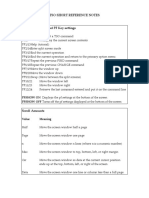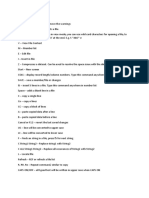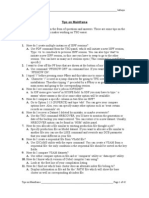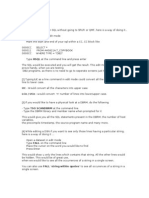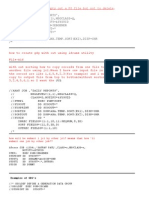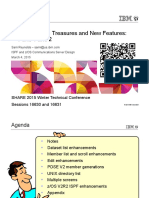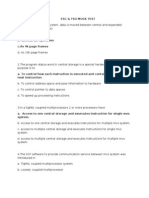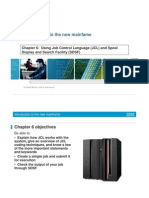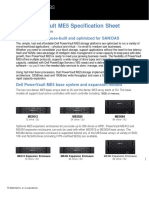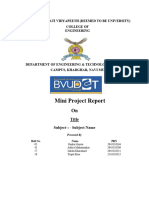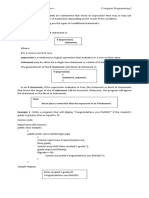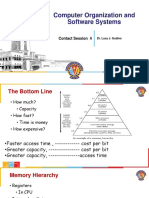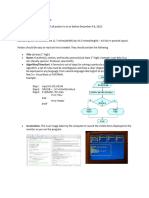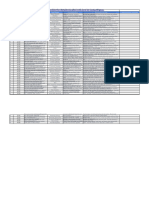TSO/E - TIME SHARING OPTION/EXTENSION - FOREGROUND PROCESSING
ISPF - INTERACTIVE SYSTEM PRODUCTIVITY FACILITY (ISPF)
EXTENT - CONTOIGUOUS MEMORY LOCATION
SPACE FOR A DATASET IS PROVIDED IN TERMS OF TRACKS OR CYLINDERS
1 TRACK ~ 47-56kb
1 CYLINDER = 15 TRKS
SPACE ALLOCATED AT THE BEGINNING IS REFERRED TO AS PRIMARY ALLOCATION
WHEN PRIMARY IS NOT SUFFICENT THEN SECONDARY ALLOCATION TAKES PLACE
1 PRI & 1 SEC (MULTIPLY 15 TIMES THE SECONDAY) = 1+ 15 = 16 EXTENTS
3.4 I SAME AS 3+ENTER+4 IS SAME AS 3;4 all these have the same effect
. connects the panels
; is command separator
Except 3.4 screen all other screen enter the dataset name in quotes ' '
in ISPF there are 2 kinds of commands
1. primary command = command line (column command)
2. row command or the line command
you can open a dataset in 3 modes
E - Edit - when you wish to make permanent changes
V- View - When you wish to make changes for the dataset only for that session ;
B - Browse - no changes can be made
primary commands/command line
1. RES - RES is the short name for RESet for resetting the informational messages
2. SAVE - Save the dataset (works only in Edit mode)
3. COLS - to show the column number (Can be entered as a row command also)
4. CAN - Cancel the changes (PF12 is generally mapped to CANCEL)
5. HEX ON - to see the data in Hexa format (internal format- EBCDIC) ; HEX OFF will
come back to normal display format
X'40' = Space
6. REPL - short name for REPLace for saving the changes in View mode
REPL .ZF .ZL 'dataset-name'
where .ZF means First line
and .ZL means last line
ISPF uses Z for naming its variables
7. CREATE - for creating a new dataset in View mode, keeping the source dataset as
it is
CREATE .ZF .ZL 'dataset-name'
8. REF - short name for Refresh - refreshing the screen
9. CHANGE - Short name is C ; C SOURCE-STR TARGET-STR ; PRESS PF06 (RCHANGE -
Repeat Change)
mass change can be done with C ALL 'source-string' 'target-str'
10. FIND - Searching a string (F is the short name for Find; PRESS PF05 for repeat
Find)
F ALL 'target STR' to display the no. of occurrences of the target
string
F ALL P'<' will search for all lower case letters
F ALL P'<' will search for all upper case letters
PREFIX/SUFFIX/WORD
11. PF07 is up and PF08 is go down (TOP & BOTTOM will go to the Top of data and
Bottom of data respectively)
� (M+PF07=TOP ; M+PF08=BOTTOM)
12. PF10 is to move LEFT and PF11 is to move right
13 LOCATE (L) : LOCATE Label or LOCATE line number
14 Scroll amount (CSR/PAGE/nnn/HALF)
15 PF12 - CANCEL/RETREIVE ;; PF03 = END +enter
16 START OPENS A NEW SCREEN (ISPF PRIMARY PANEL SCREEN)
17. LIST + PF09 - (same as SWAP+LIST+ENTER) no of screens opened for that session -
max of 8 screens can be opened
18. SCRNAME user-defname = meaning name to the screen
19. PANELID - and hit enter, it shows the internal panel member name (useful for
Rexx coding)
20 PFSHOW - to see the PF key mapping to turn it off type PFSHOW OFF
21 RETP - Retrieve previous commands
22 KEYS - to see the current PFKEY mapping and modify any PF key to your desired
action
23 SORT start-col end-col (A/D) default is Asc
24 CUT/PASTE - When you want to copy lines from source file to target file
CUT should be used in the source file and Paste is used in the
target dataset
PASTE should be used with A/B if the target is not empty
DEL in front of the dataset name in 3.4 listing will delete the dataset
alternatively you can use the TSO Command - TSO DELETE 'dataset-name'
R in front the dataset name in 3.4 listing will rename the dataset
I OR S in from the dataset name in 3.4 listing will show the dataset attributes
row commands / line commands
I = insert a blank line
d - delete the line
r = repeat a line
c - copy a line it has accompany with A/B (After/Before)
m - move a line from source line top target line (it has accompanied with A/B)
x - Exclude from the display
) - shifts the data to right (by default 2 columns) - data will be truncated if it
crosses the boundary
( - shifts the data to left (by default 2 columns) - data will be truncated if it
crosses the boundary
< and > - same as ( aand ) but without truncation
UC - change the case to upper case
LC - change the case to lowercase
HX - hexa format data for that row
Dn - where n is a number ; n number of lines will be deleted
block commands are for a group
))….))n will move the columns to the right by n bytes
PDS member is equivalent to PS dataset in terms of contents and usage
m in front of the member moves the member from source pds to target pds (it removes
from source and puts in target pds)
C in front of the member copies the member from source pds to target pds (its keeps
the source member intact)
R in front of the PDS member renames the member (renaming can be given in the
prompt)
D in front of the member deletes the member
in the command line L member-name (locate member-name)









